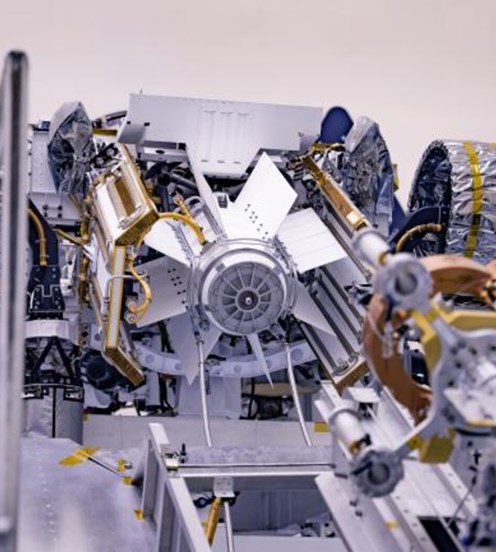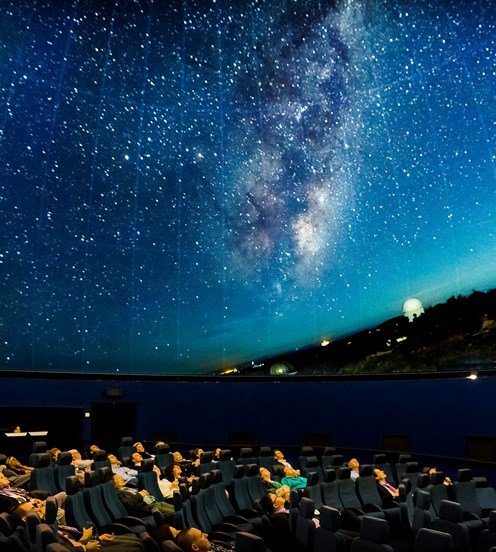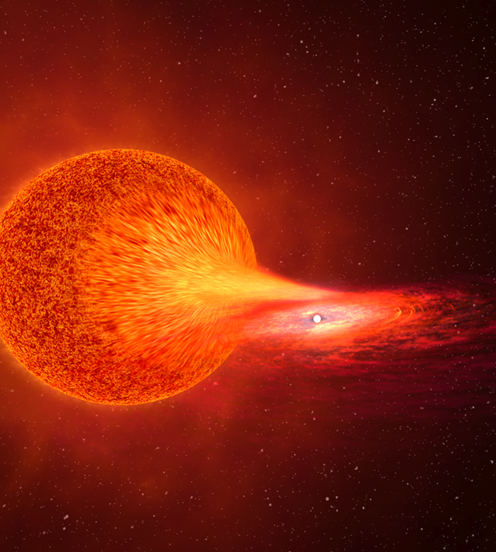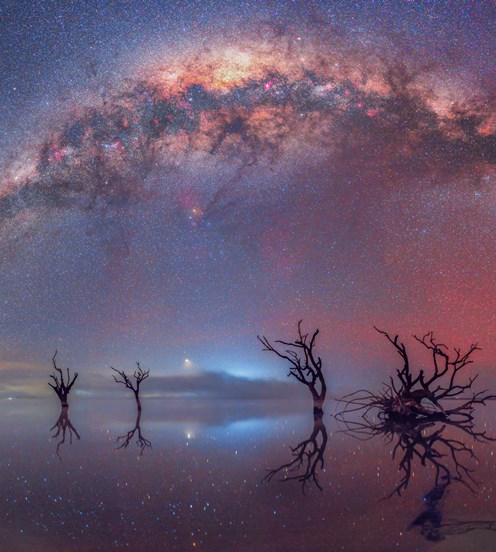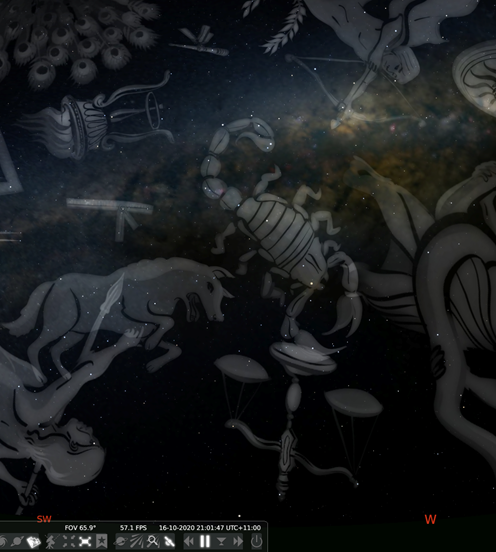Autumn Equinox
This month we have almost equal lengths of day and night (see Planets below). There are also good opportunities to observe the International Space Station pass high overhead early morning and evening. And Mars has been visited by probes from USA, China and UAE, making this month a special time in planetary exploration. For the latest see the mission sites linked on our page Mars Ahoy! from last October, or use these direct links:
And enjoy the spectacular video of Perseverance's landing - it's breathtaking!
Melbourne sun times
| |
Rise |
Set |
Day length |
Solar noon § |
| Mon 1st |
7:04 |
8:00 |
12:55 hrs |
1:32 |
| Thu 11th |
7:14 |
7:45 |
12:31 hrs |
1:30 |
| Sun 21st |
7:23 |
7:30 |
12:06 hrs |
1:27 |
| Wed 31st |
7:32 |
7:15 |
11:42 hrs |
1:24 |
§ When the sun is at its highest, crossing the meridian or local longitude.
Moon phases
| Phase |
Date |
| Third Quarter |
Sat 6th |
| New Moon |
Sat 13th |
| First Quarter |
Mon 22nd |
| Full Moon |
Mon 29th |
This month’s Moon apogee (furthest from Earth) is on Thu 18th at 405,253 km and perigee (closest to Earth) is on Tue 30th at 360,309 km.
Planets
Mercury is visible rising in the east from around 5am before fading in the early dawn light.
Venus is barely visible this month as it lies very close to the sun. As the month progresses it will move behind the sun.
Earth’s southern hemisphere experiences the Autumn Equinox on Saturday 20th with the Sun rising almost due east and setting virtually due west. From ancient Latin aequinoctium (equal night) through medieval Latin equinoxium we have our modern equinox. At this time the Earth’s axis at a fixed tilt of 23.5 degrees will not be leaning away from the sun as it does in winter, nor towards the sun as in summer. However, for Melbourne’s latitude day and night are almost exactly equal in length a few days later on Wednesday 24th. This four-day delay is because the atmosphere bends or refracts light from the sun allowing us to see the sun a little before it physically rises, and for a short time after it has actually set.
Over the next three months the sun’s daily path across the sky shifts northward a little each day until mid-year’s Winter Solstice. By that time the south pole will be leaning fully away from the sun, the sun’s path will be lowest in the sky, the angle of its rays will be shallowest giving least energy per square metre, the day will be shortest, and we will then have slipped once again into winter.
Mars is still clearly visible low in the north-west from around 8pm but will set by 11pm.
Jupiter rises in the east in the early morning about 4am before fading in the dawn light by 7am.
Saturn precedes Jupiter rising around 3.30am before being lost by 6.45am in the early morning light.
International Space Station
ISS orbits every 90 minutes at an average distance of 400km appearing like a bright star moving slowly across the night sky. Here are two bright passes expected this month over Melbourne. Both will move high overhead, one in the evening and the other in the early morning:
Thu 4 Mar 9:13pm – 9:17pm South-West to East-North-East. Highest point: 78 degrees above the horizon.
Wed 24 Mar 6:52am – 6:54am West-North-West to South-East. Highest point: 68 degrees.
For predictions go to www.heavens-above.com.
Meteors
There are two small showers this month that occur near the South Celestial Pole (SCP). If you extend the long arm of the Southern Cross 4.5 times that will bring you very close to the SCP. The gamma Normids is due to peak around the 14th centred on the yellow giant star Gamma Normae in the constellation of Norma, the level. The other is the delta Pavonids from the 21st peaking in early April in Pavo, the peacock. Meteor showers are best seen from midnight to dawn and from a location well away from city lights.
Stars and constellations
Some features of the evening sky this month:
In the west
The constellation of Orion the hunter can be found in the north-west after sunset. From the southern hemisphere he is upside down. Look for three bright stars in a line to form Orion’s Belt (also the base of The Saucepan or Pot from a southern perspective). Directly below is one of his shoulders, the red supergiant star Betelguese which has an obvious orange-red colour. From Boorong stories the three stars of the belt form Kulkunbulla, two young men learning to dance. To the left and low down in the sky is Taurus the bull, its head an inverted V of stars. Another easily recognizable red-giant star Aldebaran lies on the corner. In Boorong stories these stars form the custodian Gellarlac, the songman who holds and passes on the knowledge to the people.
In the north
Low in the north can be seen Castor and Pollux, the principal stars for Gemini the twins.
The brightest star in our night sky, Sirius in Canis Major (greater dog) is high overhead at sunset with Procyon in Canis Minor (lesser dog) directly below. Sirius in the Boorong tradition is the head or beak of Warepil the lawgiver, a wedge-tailed eagle and largest bird of prey in Australia. His wings stretch above and below as he flies in the sky.
In the north-east
Low in the north-east we can now see the hook of stars, like an inverted question mark, that forms the head and mane of Leo the lion with the bright star Regulus.
In the south-east
Easy to spot is the Southern Cross or Crux lying on its side with Alpha and Beta Centauri (the Two Pointers) below. If you can see the broad band of distant stars that form the Milky Way that arcs across the sky from south to north, you will see the dark dust cloud known as the Coal Sack adjacent to the Southern Cross. This is the head of a giant emu, the Pointers denote its neck, and its body is made from the other dark clouds that reach to the southern horizon. Later in the night as the Earth rotates west to east, the entire emu will become visible rising in the south-east.
In the south-west
Out on their own, but best seen away from city lights, are the Large and Small Magellanic Clouds, our galaxy’s nearest neighbours at 163,000 and 206,000 light years away respectively. Look for two fuzzy patches in the sky directly opposite the Southern Cross which lies in the south-east. We are fortunate to see them all year round. From equivalent latitudes in the northern hemisphere such as Europe, North America, China, Japan or Korea, they cannot be seen.
Explore Australia’s First Peoples’ astronomy at: aboriginalastronomy.com.au
On this day
1st, 1966 Venera 3 (USSR) crash lands on Venus as first probe to land on a planet.
1st, 1982 Venera 13 (USSR) sends the first colour pictures of the surface of Venus and continues transmitting data for 2 hours, well beyond the 30 minute expectation.
2nd, 1972 Pioneer 10 (USA) probe launches to the outer solar system.
3rd, 1969 Apollo 9 (USA) tests lunar module in Earth orbit for eventual moon landings.
4th, 1979 Voyager 1 (USA) discovers the faint rings of Jupiter, with Voyager 2 taking further images four months later during its own fly-by of the giant planet.
5th, 1590 Tycho Brahe discovers a comet and shows that comets are further away than the Moon.
5th, 1979 two probes and a satellite are affected by ‘gamma ray bursts’ leading to study of these high energy phenomena.
6th, 1986 Vega 1 (USSR) makes the first flyby of Comet Halley and returns the first close-up images of a comet.
9th, 1934 birth of first human into space, Soviet cosmonaut Yuri Gagarin.
11th, 1977 the rings of Uranus are discovered as the planet eclipses a distant star.
13th, 1781 Uranus is discovered by Sir William Herschel (UK).
14th, 1879 birth of Albert Einstein famous for photo-electric effect, relativity, and letter to US President Roosevelt on the power and destructive potential of the atom.
18th, 1965 Aleksei Leonov (USSR) carries out the first spacewalk.
17th, 1958 first solar powered satellite, Vanguard 1 (USA), is launched.
20th, 1916 Einstein publishes his theory of gravity, the General Theory of Relativity.
23rd, 2001 Russian (former USSR) space station Mir (‘Peace’) is destroyed in its planned re-entry to Earth’s atmosphere.
23rd, 1912 birth of Werner von Braun famous for leading German rocketry in World War 2, and a key figure in US space program until the 1970s.
24th, 1965 Ranger 9 (USA), sends first television of the moon before crash landing.
25th, 1655 Christiaan Huygens discovers Titan, the largest moon of Saturn.
27th, 1969 Mariner 7 (USA) is launched to Mars.
29th, 1974 first fly-by of Mercury by Mariner 10 (USA).
30th, 240BC closest approach to the Sun (perihelion) in historical records of what is now called Comet Halley.
31st, 1966 Luna 10 (USSR) becomes the first probe to orbit the moon.
